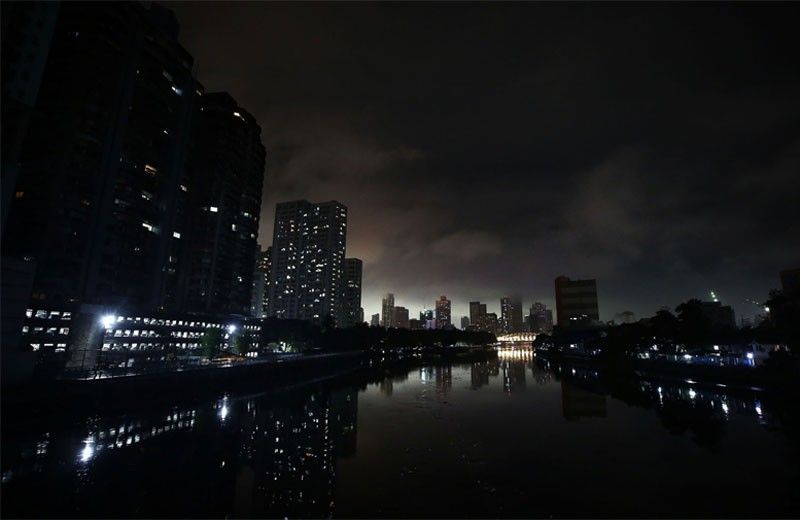Luzon grid likely under yellow alert next week

MANILA, Philippines — The Luzon grid is again facing a potential shortfall in power supply this summer, with yellow alerts possible beginning next week, the Manila-based Institute for Climate and Sustainable Cities (ICSC) announced yesterday.
The ICSC said the Luzon grid would likely be placed under yellow alert status next week until mid-June.
The group said the sufficiency of power supply during the summer season in the Luzon grid has been a recurring issue for several years.
“Despite the lockdowns and lower power demand during the pandemic, threats of grid alert levels and blackouts due to forced outages and deration of power plants had significantly reduced the power generating capacity of the grid,” the ICSC said.
While the Department of Energy (DOE) has stated that there is no immediate threat of summer blackouts as long as power plants operate as planned, the ICSC said it could not be assured that unplanned forced outages from these power producers would not occur this summer, nor that these outages will be resolved soon.
“It is important to remain cautious of the thinning power supply in the upcoming summer months,” the group said.
The ICSC report, entitled “Luzon Power Outlook: Reviewing the Adequacy of Power Supply for April to June 2023,” examined the sufficiency of power supply in the country’s biggest island for the second quarter of 2023, based on the power demand forecasts presented by the DOE in March.
According to the ICSC, the DOE forecasted a total of 15 weeks under yellow alert status in 2023, contrary to their initial estimate of 12 weeks, and none under red alert status.
The ICSC, in its report, took into consideration the agency’s assumptions, including peak demand requirements of 13,125 megawatts, no planned maintenance outages and forced power plant outages amounting to about 600 MW during the second quarter.
The report reaffirmed that the power outlook this summer is “very tight, and multiple yellow alert issuances are possible within the year.”
The ICSC said the DOE’s power outlook assumptions are realistic and capture a conservative scenario on the power supply demand outlook this quarter.
“Higher demand during summer lowers the available generating capacity from weeks 17 (April 24 to 30) to 24 (June 12 to 18). The supply can further deplete as forced outages of large baseload power plants can unexpectedly occur during these times, likely pushing the system into yellow alert and near red alert levels,” Jephraim Manansala, ICSC chief data scientist and author of the report, said.
“This highlights the need to monitor the compliance of all power plants with the Grid Operating and Maintenance Program (GOMP) plans of the National Grid Corp. of the Philippines (NGCP),” Manansala said.
A yellow alert is raised when there are not enough reserves to cover the largest running generating unit at the time, but does not necessarily lead to power outages.
Red alert is placed over the grid when the supply to demand balance further worsens, which can lead to rotating power interruptions.
To prevent the power supply from falling under red alert levels, which will lead to rotating power interruptions in Luzon, the ICSC said the government and power industry players in the country need to ensure that power plants comply with the NGCP’s GOMP by minimizing outages during this critical period, and that ancillary services are sufficient to support power transmission.
The ICSC said consumers must also do their part to contribute to demand-side management through energy efficiency and conservation.
The group said this could be done through initiatives such as implementing energy-saving practices in the workplace, shifting the use of energy-intensive activities to non-peak hours and upgrading to more efficient technologies at homes or for commercial and industrial establishments.
Manansala said the recommended contingency plans may help prevent a power crisis this quarter, but more long-term solutions are needed to address the Philippines’ energy challenges.
1 million without electricity
An estimated one million Filipino households still have no access to electricity, according a survey released on Monday by the Social Weather Stations (SWS).
Results of the Dec. 10 to 14 survey showed that 96 percent or about 24.5 million households in the Philippines have access to electricity.
The remaining four percent, which represents about one million households, said they still have no access.
The SWS did not release the geographical breakdown of the respondents with or without access to electricity.
The 96 percent who have access is composed of 87 percent who said their electricity is billed and nine percent who said it was not billed.
For those whose electricity is billed, their average expense is P900 per month.
It was highest among those in Metro Manila at P1,500 per month, followed by those in the Visayas at P1,000, rest of Luzon at P753 and Mindanao at P800.
Those whose electricity is not billed said they spend an average of P400 per month.
It was highest among respondents in Metro Manila at P750 per month, followed by those in the rest of Luzon at P500 and the Visayas and Mindanao at P200. – Janvic Mateo
- Latest
- Trending

































